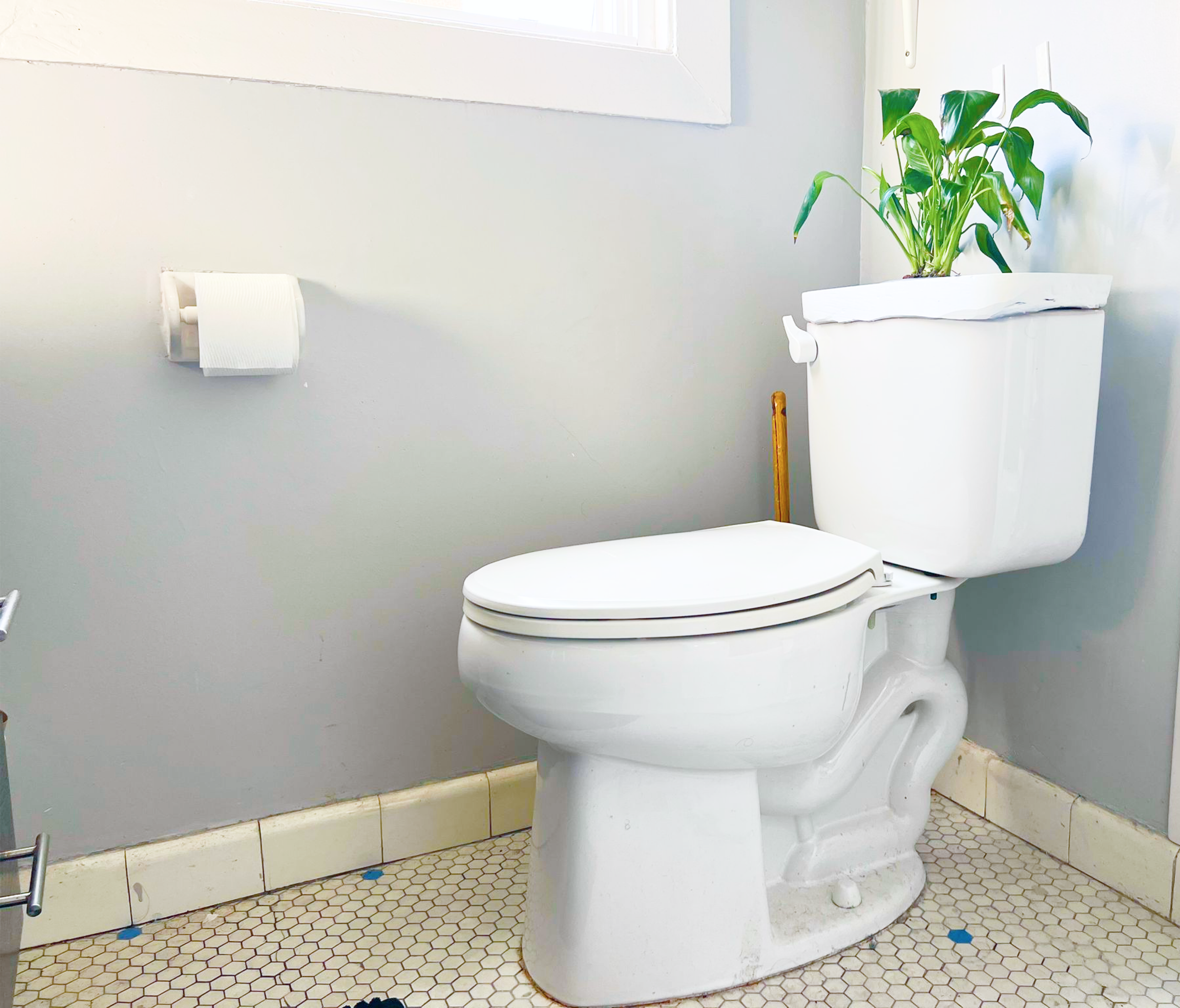
International Design Awards 2023
Silver Winner in Conceptual Products / Eco Design Products
A toilet tank plant.
INTRODUCTION
The bathroom acts as a private efficiency-driven space, but this is actually a recent development in history. In many cultures, public baths have existed for centuries as spaces of leisure, social congregation, and pleasure. How can nature improve our bathroom spaces, and vice versa? We resolved to rethink the bathroom experience to make it a healthy, sustainable environment to grow a houseplant.
CLASS
Berkeley Master of Design
Studio Foundations
MY ROLE
Conceptualizing
Fabrication
Speculative design
TOOLS
Sketching
Laser cutting
Woodwork
Plaster
Cement
THE TEAM
Abigail Chen
Ankur Kela
TIMELINE
4 weeks
September 2023
PROMPT
Design a vessel.
Develop and design an object that will serve as a vessel to hold a plant, flower, or other living form. Consider various factors such as design precedents, form, material properties, growth dynamics, and ecological impact. Design a vessel that ensures the plant’s well-being throughout the entire semester by understanding specific needs of the plant you choose, including water, light, air circulation, and growth space.
BACKGROUND
Meet Phoebel, our peace lily!
PHOEBEL’S NEEDS
💧 Water
Peace lilies should be watered about once per week, when the soil is dry.
They can also be grown hydroponically.
☀️ Light
Peace lilies need to be placed in an area where they can get approximately 6 to 8 hours of indirect light.
💨 Humidity
It is recommended to regularly mist lilies with a spray bottle to replicate the humid air of the rainforest.
So we put Phoebel in the bathroom.
PROBLEM
🚽 Toilet tank water is under-utilized
In a toilet, clean water fills the tank, flows into the toilet bowl when flushed, and then the wastewater flows into the sewer. That means that the toilet tank water is technically clean! It’s called greywater--the household waste water coming from baths, sinks, and other appliances. This relatively clean water is simply sitting in the tank for most of the day.
💧 Water is a limited resource
Peace lilies should be watered about once per week, when the soil is dry.
They can also be grown hydroponically.
💦 Hydroponics require lots of water
As a general rule of thumb when growing hydroponically, small plants require at least ½ gallon of water per plant, medium plants 1 ½ gallon and large plants 2 ½ gallons.
How might we utilize resources in the bathroom to support the growth of a plant?
SOLUTION
We redesigned the traditional ceramic toilet tank cover to allow for a houseplant to grow semi-hydroponically in toilet tank water.
HOW DOES THIS RESPOND TO PHOEBEL’S NEEDS?
💧 Water
The semi-hydroponic system will guarantee the peace lily’s roots’ continuous access to water.
☀️ Light
This design assumes the presence of a window in the bathroom.
Otherwise, grow lights will be needed to ensure the peace lily can acquire the 6 to 8 hours of indirect light it needs.
💨 Humidity
The bathroom provides a steamy environment for the peace lily.
A SYMBIOTIC RELATIONSHIP
🌸 The plant improves the human’s bathroom experience
Greenery provides a natural respite to improve our bathroom experience and help us feel connected to nature. Additionally, the floral scent of the peace lilies will improve the overall experience.
🚿 The bathroom provides a beneficial environment for the plant
Peace lilies enjoy the humid environments of the bathroom created when we humans shower.
Sketches
Low Fidelity Prototype
Cardboard +
Cup with holes
Mid Fidelity Prototype
Laser cut plywood +
Netted pot
Final Prototype
Cement +
Netted pot
PROCESS













